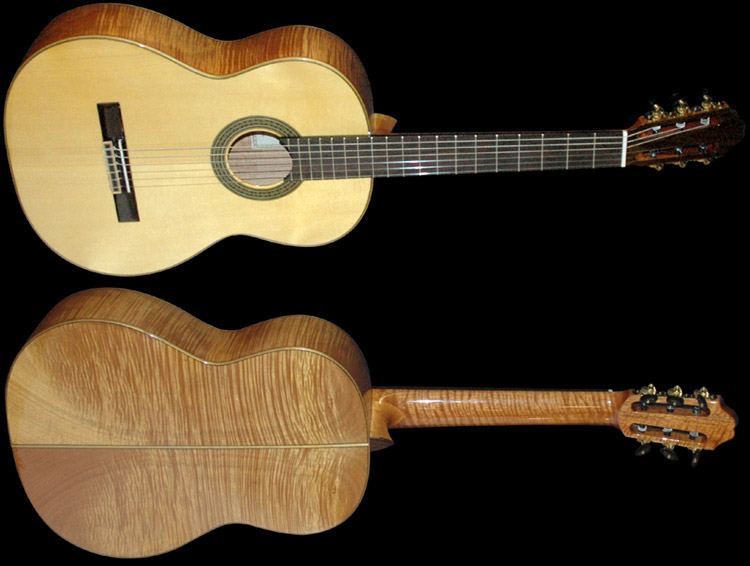The classical guitar (also called classic guitar, Spanish guitar, nylon-string guitar or concert guitar) is a 6-stringed plucked string instrument from the family of instruments called chordophones.
In addition to the instrument, the phrase "classical guitar" can refer to two other concepts:
- The instrumental technique common to classical guitar, individual strings plucked with the fingernails or , rarely, fingertips.
- The instrument's historic repertoire.
The shape, construction, and material of classical guitars varies, but typically they have a modern classical guitar shape, or historic classical guitar shape (e.g., early romantic guitars from France and Italy). Strings are usually of nylon or other synthetic material, or fine wire wrapped around a nylon or other synthetic core. Historic guitars may have strings made of gut (sheep or pig intestine).
A guitar family tree can be identified. (The flamenco guitar derives from the modern classical, but has differences in material, construction and sound).
The term modern classical guitar is sometimes used to distinguish the classical guitar from older forms of guitar, which are in their broadest sense also called classical, or more descriptively: early guitars. Examples of early guitars include the 6-string early romantic guitar (ca. 1790 - 1880), and the earlier baroque guitars with 5 courses.
Today's modern classical guitar was established by the late designs of the 19th century Spanish luthier Antonio Torres Jurado. Hence the modern classical guitar is sometimes called the "Spanish guitar".



